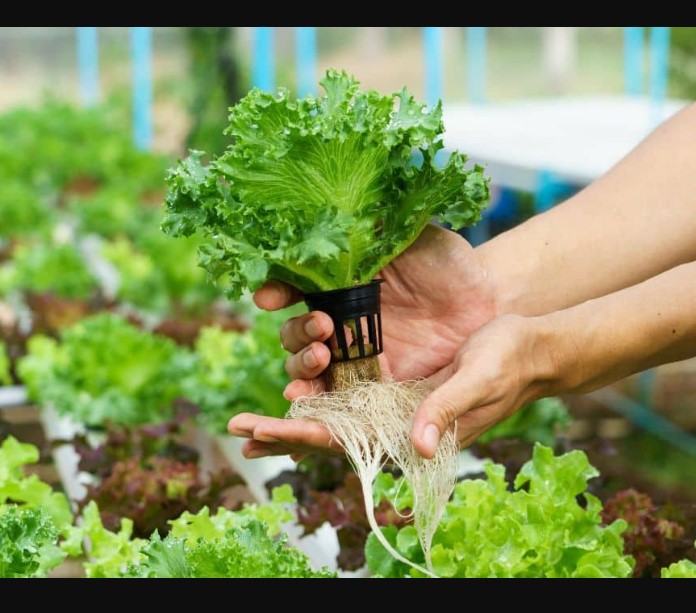In modern agriculture, hydroponic gardening is a testament to innovation and sustainability. Departing from traditional soil-based cultivation, hydroponics presents a revolutionary approach to growing plants by delivering nutrients directly to their roots in a water-based solution. This method conserves water and maximizes space utilization, making it an ideal choice for urban environments and resource-constrained regions. This comprehensive guide delves into the fundamentals of hydroponic gardening, exploring its techniques, benefits, and potential challenges.
Understanding Hydroponic Gardening:
At its core, hydroponic gardening revolves around providing plants with essential nutrients dissolved in water, bypassing the need for soil. This method offers precise control over nutrient levels, pH balance, and environmental conditions, fostering optimal growth rates and yield. Hydroponics ensures consistent and healthy plant development throughout the growing season by eliminating soil-related issues such as compaction, nutrient depletion, and pests.
Key Components of Hydroponic Systems:
Hydroponic systems come in various designs, each tailored to suit specific plant types, space constraints, and resource availability. The following are some of the most common components found in hydroponic setups:
- Reservoir: The reservoir is the central hub where the nutrient solution is stored and circulated to the plants. It must be adequately sized to accommodate the water volume required for sustained plant growth.
- Growing Medium: While hydroponic systems do not rely on soil, they often utilize inert growing mediums such as perlite, vermiculite, or coconut coir to support plant roots and provide stability. These mediums facilitate nutrient absorption and ensure proper aeration for root health.
- Nutrient Solution: A meticulously formulated nutrient solution containing essential macro and micronutrients is the lifeblood of hydroponic gardening. Maintaining the correct nutrient balance is crucial for sustaining healthy plant growth and preventing deficiencies or toxicities.
- Water Pump and Aeration System: Water pumps circulate the nutrient solution through the system, ensuring uniform distribution to all plants. An aeration system, typically comprising air stones or diffusers, also oxygenates the solution, promoting root respiration and preventing anaerobic conditions.
Types of Hydroponic Systems:
Hydroponic gardening offers various system configurations, each offering unique advantages and suitability for different growing scenarios. Some of the most popular types include:
- Deep Water Culture (DWC): In DWC systems, plant roots are suspended directly in the nutrient solution, supported by floating platforms or net pots. This method provides excellent oxygenation to the roots while simplifying maintenance tasks.
- Nutrient Film Technique (NFT): NFT systems utilize a continuous flow of nutrient solution through shallow channels, allowing plant roots to access water and nutrients while remaining exposed to oxygen-rich air. This method is well-suited for fast-growing crops such as lettuce and herbs.
- Ebb and Flow (Flood and Drain): Ebb and flow systems flood the growing medium with a nutrient solution before draining it away, providing plants with periodic hydration and aeration cycles. This method promotes robust root development and nutrient uptake.
- Aeroponics: Aeroponic systems mist the plant roots with a nutrient solution suspended in the air, creating a highly oxygenated environment conducive to rapid growth. This approach minimizes water usage and nutrient wastage while maximizing nutrient absorption efficiency.
Benefits of Hydroponic Gardening:
The adoption of hydroponic gardening offers many benefits that contribute to its growing popularity among growers worldwide. Some of these advantages include:
- Increased Crop Yield: By providing plants with optimal growing conditions, hydroponic systems often yield higher quantities of fruits, vegetables, and herbs than traditional soil-based methods.
- Water Conservation: Hydroponic systems use significantly less water than conventional farming practices, making them eco-friendly in regions facing water scarcity or drought conditions.
- Space Efficiency: Hydroponic setups can be tailored to fit virtually any space, from compact indoor gardens to expansive commercial facilities. This allows for efficient land utilization and maximizes crop production per square foot.
- Year-Round Cultivation: With controlled environmental parameters such as light, temperature, and humidity, hydroponic gardening enables year-round cultivation regardless of external seasonal fluctuations, ensuring a steady supply of fresh produce.
Challenges and Considerations:
While hydroponic gardening offers numerous advantages, it also presents certain challenges and considerations that growers must address to ensure success:
- Initial Investment: Setting up a hydroponic system requires an upfront investment in equipment, infrastructure, and nutrient solutions. However, the long-term savings in water usage and increased yields often justify the initial costs.
- Technical Knowledge: Successfully managing a hydroponic garden requires a solid understanding of plant nutrition, water chemistry, and system maintenance. Growers must be prepared to continually monitor and adjust environmental parameters to optimize plant health and productivity.
- Disease and Pest Management: While hydroponic systems mitigate soil-borne diseases and pests, they are not immune to other issues, such as fungal infections or insect infestations. Implementing preventive measures such as sanitation protocols and biological controls is essential to safeguard crop health.
Conclusion:
In conclusion, hydroponic gardening represents a paradigm shift in agricultural practices, offering a sustainable and efficient alternative to traditional soil-based cultivation. By harnessing the power of water, nutrients, and technology, growers can cultivate a wide range of crops with minimal environmental impact and maximum productivity. While challenges exist, the rewards of hydroponic gardening are undeniable, making it a compelling choice for both hobbyists and commercial growers alike. As we continue to explore innovative food production methods, hydroponics stands poised to play a pivotal role in shaping the future of agriculture.

